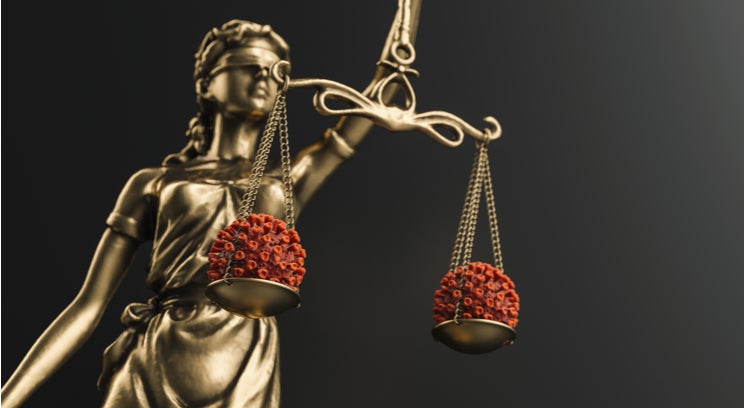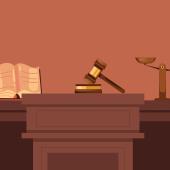
Although COVID-19 is a novel virus, the type of litigation it has sparked is not unique. The lawsuits that have arisen from the pandemic build on areas of law that are generally well-established throughout the United States. Though the impacts of the virus only began to spread throughout the country at the beginning of 2020, there are already thousands of filings across the nation asserting a variety of theories in COVID-19 related cases.
This article summarizes the types of COVID-19 lawsuits that have been filed relating to the workplace, nursing homes and contractual breach/failure to perform theories. We also provide an overview of the product liability lawsuits that will likely follow in the wake of the coronavirus.
Personal injury litigation
Customers and employees
Cruise lines have been accused of negligently exposing passengers to an unreasonable risk of harm to COVID-19. In the Central District of California, plaintiffs allege that Princess Cruise Lines negligently exposed passengers to an unreasonable risk of harm by setting sail on March 8, failing to warn them of the risk, implement proper screening protocols, or quarantine any of the passengers. Similar claims have been filed in the Southern District of Florida against Costa Cruise Lines.
Though implementing safety measures seems the prudent decision for businesses, it is not without its own risks. In an attempt to protect its employees from COVID-19, a Texas grocery store chain installed Plexiglas partitions. The grocery store chain is now facing a lawsuit after one of the barriers was improperly installed and fell on a customer’s foot, requiring her to have surgery.
Customers are far from the only group pursuing claims. In the first known COVID-19 wrongful death lawsuit, Walmart has been sued by the family of a deceased employee that alleges that the store failed to take steps to protect workers. The complaint, filed in Cook County, Illinois, alleges that Walmart did not sterilize the store, provide employees with personal protective equipment (PPE), or promote or enforce social distancing under the CDC guidelines.
As local economies reopen, the number of workplace suits alleging failure to protect or negligent exposure will likely continue to increase.
Nursing homes
In Georgia, the families of former residents of an assisted living facility have filed three separate suits and claimed that the facility did not follow its own rules regarding visitation restrictions and failed to require its staff to wear personal protective equipment, exposing residents to the coronavirus and causing their wrongful death. Similar cases are popping up across the country.
Lawsuits have also been filed by the families of nursing home employees. A certified nurse aid died from alleged COVID-19 exposure in Austin, TX. The wrongful death complaint alleges that the nursing home put profits over the safety of its patients and staff by failing to provide personal protective equipment and unnecessarily exposing its patients and staff to unreasonable risks of serious harm. Further, the nursing home knew or should have known that COVID-19 was an imminent threat.
Non-personal injury litigation
Misrepresentation and fraud
After the US Food and Drug Administration sent a letter to Purell warning it over the claims it makes regarding its hand sanitizer, multiple lawsuits were filed against similarly situated companies. In Taslakian v. Target Corporation, et al., the plaintiff alleges that he and other consumers believed Target brand hand sanitizer would protect them from the spread of disease based on false marketing claims and representations.
The complaint asserts that Target claims that its hand sanitizer can eliminate most “germs,” including viruses and bacteria in as little as 15 seconds of use. Target allegedly made these representations despite the lack of scientific evidence to show that the hand sanitizer could actually kill viruses and bacteria.
False advertising claims extend to many other products, such as silver soaps and lozenges marketed as preventing and treating COVID-19; at home COVID-19 test kits; and a vitamin-like product that purportedly treats, prevents, or reduces the risk of COVID-19. There have also been alleged misrepresentations related to companies’ ability to provide PPE.
Force majeure and impossibility
Generally, a “force majeure” or “impossibility” clause excuses contractual performance when it is impossible or impracticable. Typically, these clauses are triggered by an extraordinary event that the parties could not have anticipated, such as an act of God. Businesses around the country are seeking to be excused from contractual obligations due to the far-reaching consequences of COVID-19. For example, a landlord has sued AMC Theatres for over US$7,500,000 for failure to pay rent. The landlord argues that despite the pandemic, the force majeure provision in the lease has not been triggered.
Of course, the pandemic has also affected companies’ ability to hold events. The founders of Comic-Con sued a ticket processor over the cancelation of a Comic-Con event scheduled in March. The founders alleged they invoked the force majeure clause in their agreement, but the ticket processor has refused to reimburse the buyers.
Consumer class-action refund claims
Major League Baseball was sued in a class-action claiming ticket holders are owed a full refund for tickets because of the delay of Opening Day. The plaintiff says the league’s categorization of games as postponed, rather than canceled, is a “pretext” to allow online ticket sellers to avoid giving refunds. Similarly, a putative class action alleges that a ski resort wrongfully kept customer pass-holder fees despite closing its resorts due to COVID-19.
The organizers of SXSW have been sued for failing to offer full cash refunds for the canceled event. Rather, SXSW offered ticket purchasers a deferral of their festival credentials for one of the next three festivals and a 50 percent discount in subsequent years. This has been a pattern with a multitude of companies, including Ticketmaster, airlines, theme parks, and gyms.
Potential defenses to COVID-19-related litigation
Products liability lawsuits and the PREP Act
COVID-19 products liability has been limited to date, likely as a result of purported immunity under the Public Readiness and Emergency Preparedness Act (PREP) Act. Pre-COVID-19 litigation is insightful, however, regarding the theories that might be successful in defending against claims related to the current pandemic.
Product liability defenses
Well before COVID-19, protective products, such as masks, gloves, and glasses, have been a hotbed of products liability litigation. Failure to warn and product defect actions have the potential to increase significantly with the emergence of COVID-19. We are still in the early stages of COVID-19 related lawsuits, and although personal injury products liability suits are currently limited or non-existent, such litigation is likely to result from the manufacture, distribution, and sale of PPE.
For example, the United States has filed charges against a Chinese mask manufacturer after inspecting their masks at John F. Kennedy Airport in New York. The masks made by Crawford Technology Group claimed to be N95 masks that filter out at least 95 percent of very small particles, including droplets containing viruses.
After inspecting the filtration efficiency of the masks, however, they were found to only filter 22.33 percent of particles on average. The masks were misbranded and showed labels falsely claiming they were 95 percent efficient in filtering harmful particles, in violation of regulatory standards.
Similarly, the Wall Street Journal reported that the United States has also filed charges against King Year Printing and Packaging Co. for mislabeling masks as N95 when they only filtered out 83 percent of particles. These masks were used by the Massachusetts state health department and were only found to be faulty after being tested by researchers at the Massachusetts Institute of Technology.
These charges were reported as the first criminal charges against a mask producer during the global pandemic. These cases are representative of the likely nature of legal causes of action in the face of COVID-19. Given this, products, such as PPE, should contain specific warnings, including disclaimers as it relates to improper use. These warnings will remain important, even in light of the immunity provided by the PREP Act, discussed below.
PREP Act immunity
On March 10, 2020, the Secretary of Health and Human Services (HHS) issued a declaration providing tort immunity under the PREP Act to entities involved in the creation or distribution of “countermeasures” to the COVID-19 virus. “Countermeasures” covered by the PREP Act include the production or manufacture of any drug, medicine, vaccine, or device used to treat, diagnose, cure, mitigate, or prevent COVID-19.
Consequently, businesses and persons engaged in the manufacture, distribution, program planning, testing, development, and administration of countermeasures cannot be sued under federal or state law. Certain products that are used to diagnose, mitigate, prevent, treat, or cure a pandemic, or limit the harm during such a pandemic, are also protected by PREP Act immunity.
Of course, such immunity is limited and there is no immunity for intentional torts where death or serious physical injury was proximately caused by “willful misconduct.” Lastly, the immunity presently only extends through Oct. 1, 2024, but an additional “12 months of liability protection” is granted to manufacturers.
Before engaging in the creation or distribution of products believed to be covered by PREP Act immunity, counsel should be retained to determine the full scope of potential coverage for the company and product.
Causation
In preparation of a potential COVID-19 personal injury lawsuit, it is helpful to think ahead as to how potential plaintiffs would try to prove causation. These cases could look similar to injured state employees who sued for personal injuries after they became sick from mold exposure in the workplace. In one such illustrative case, employees had been reporting symptoms associated with exposure to mold and complained of specific areas in their building with mold.
Causation linking the presence of mold to the plaintiffs’ injuries was shown when plaintiffs were exposed to the mold in sufficient doses to cause the alleged health effects, and the plaintiffs showed a link between the presence of the mold and the defendants’ negligence.
A plaintiff seeking damages from exposure to COVID-19 may try to show causation in much the same way. By establishing that the virus was present at their place of work and linking its presence to their contraction of symptoms — if the plaintiff could show a link between the defendant’s conduct and the virus’ presence — the plaintiff could potentially prove causation. Before taking the risk of exposing others to the virus, being a step ahead and breaking any causal links is a key to avoiding liability.
Act of God defense
The COVID-19 pandemic has led to the assertion of the act of God affirmative defense to avoid performance of a contract. The party asserting this defense has the burden of proof and must demonstrate that the act of God was the sole and immediate cause of injury and that there was no contributory negligence. Courts have held that after an unforeseen event has happened once, a recurrence of that event is considered foreseeable.
For example, a contractor asserted the act of God defense to damages caused by the overflowing of water that flooded a construction site. After the floods happened multiple times, the court only allowed the act of God defense to apply regarding the first flood, because all of the reoccurrences were then considered foreseeable.
While there is comfort in knowing this defense can be raised in the wake of an unexpected event like COVID-19, there is a high enough burden of proof required for the success of this defense that it is wise to also take more reasonable steps to avoid liability. Further, as COVID-19 has now arguably placed everyone on notice of the potential damage a global pandemic can cause, courts may find that everyone has already been placed on notice to prepare themselves for a reoccurrence of this magnitude.
Finally, an additional prudent step for companies to take may be taking out pandemic insurance. The All England Lawn Tennis Association, which is in charge of the famous Wimbledon tennis tournament, is reported to have taken out two-million-dollars’ worth of pandemic insurance every year for the past 17 years. Due to this foresight, the association will recover almost half of the losses incurred from canceling this year’s Wimbledon tournament.
Conclusion
In this unprecedented time of uncertainty, the litigation related to this pandemic is in some ways as unpredictable as the virus itself. What is apparent, however, is that the impacts of COVID-19 will not abate in the immediate future and that cases arising out of those impacts will explode and expand in the years to come.
By studying the landscape of current COVID-19 litigation and understanding the lessons from illustrative cases in the past, manufacturers, businesses, property owners, and other companies can be prepared to both minimize litigation risks posed by the pandemic and to defend against such claims if litigation arises.







